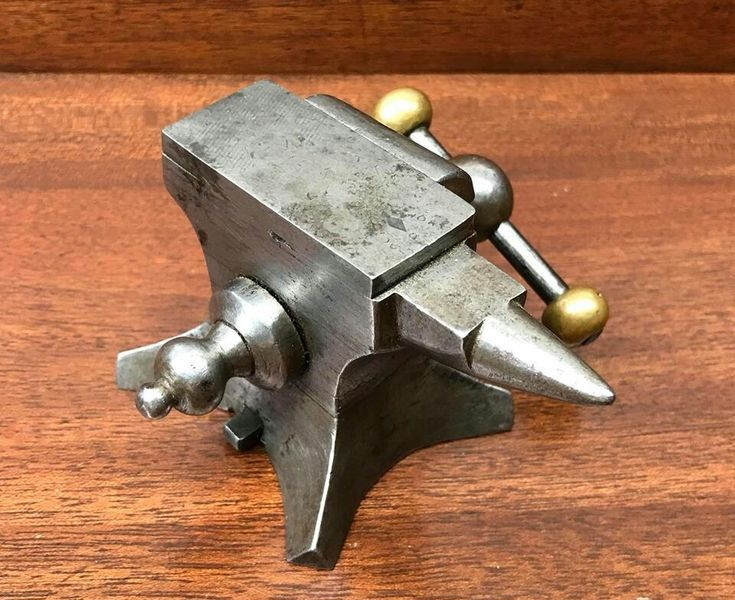Anvils have been central to metalworking for centuries, from traditional blacksmithing to modern fabrication. These durable tools provide a stable surface for hammering, shaping, and cutting metal. In this comprehensive guide, we’ll explore what anvils are, their history, and the various types you can choose from based on your metalworking needs.
What is an Anvil? Understanding Its Role in Metalworking
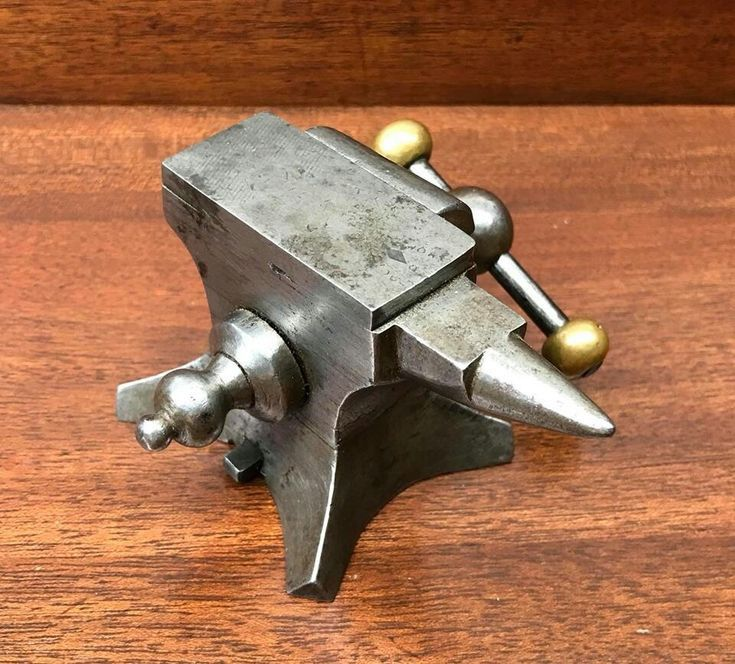
An anvil is a heavy, often steel, block with a flat top surface used for shaping and hammering metal. Known for its mass and hardness, an anvil provides the necessary resistance for metalworking tasks. Traditionally, blacksmiths have used anvils to forge and shape metal, but today they are also essential in hobbyist workshops and industrial manufacturing alike.
Key Components of an Anvil
Anvils may appear simple, but they include specific parts that make them versatile and functional tools:
- Face: The flat surface where most metal shaping occurs.
- Horn: A rounded projection used for bending and curving metal.
- Step: A small flat area used for cutting metal.
- Hardie Hole: A square hole for holding hardy tools like chisels and cutters.
- Pritchel Hole: A round hole used for punching holes and bending rods.
Each of these features allows for different metalworking processes, making the anvil a multifaceted tool.
Types of Anvils for Different Metalworking Needs
Several types of anvils are available, each designed for specific applications. Knowing the different types can help you choose the perfect anvil for your projects.
1. Blacksmith Anvils
Blacksmith anvils are among the most commonly recognized anvils and are used widely in forging and blacksmithing. They are designed to handle a range of metalworking tasks, featuring a large, flat face for hammering and a horn for bending metal. The hardie and pritchel holes allow for tool insertion, making them highly functional for different processes.
Key Features:
- Large flat face for general hammering.
- Horn for bending and shaping.
- Hardie and pritchel holes for added versatility.
Uses: Ideal for general blacksmithing, metal forging, and shaping tasks.
2. Farrier Anvils
Farrier anvils are tailored specifically for farriers, who shape and fit horseshoes. These anvils feature a narrower face for precise control, which is crucial when working with horseshoes. The specialized horns allow for bending and shaping the metal to match a horse’s hoof shape. Lightweight and portable, these anvils are convenient for mobile use, such as at stables.
Key Features:
- Narrow face for precision work.
- Specialized horns for horseshoe shaping.
- Often lightweight and portable.
Uses: Perfect for shaping and fitting horseshoes and other farrier tasks.
3. Bench Anvils

Bench anvils are small, versatile anvils designed for workbenches. Compact and lightweight, they are ideal for detailed work and precision tasks. Many bench anvils come with multiple faces suited to different functions like flattening or shaping small metal pieces. Some also feature clamps or mounts for added stability, preventing the anvil from shifting.
Key Features:
- Compact design for easy handling.
- Multiple faces for various tasks.
- Mounts or clamps for stability.
Uses: Great for small-scale metalworking, jewelry making, and intricate tasks.
4. Jeweler’s Anvils
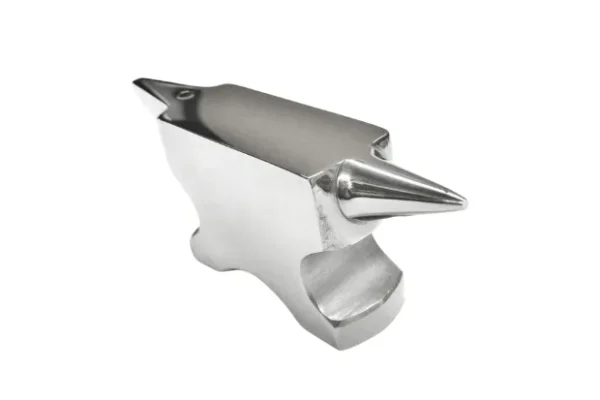
Jeweler’s anvils are specifically crafted for fine, detailed work. They are typically very small and lightweight, making them perfect for jewelry making and other delicate metal crafts. With smooth, polished surfaces, these anvils ensure that precious metals are not scratched or damaged during the shaping process. Jeweler’s anvils often have multiple faces to accommodate different tasks, from flattening to texturing.
Key Features:
- Small, lightweight design.
- Polished surfaces for working with precious metals.
- Multiple faces for intricate work.
Uses: Ideal for jewelry making, fine metal crafting, and precision tasks.
5. Stake Anvils

Stake anvils are versatile, portable tools with a spiked base that can be securely mounted on various surfaces, like workbenches or tree stumps. They come in multiple shapes and sizes, each tailored for specific tasks, such as bending or shaping metal. Their portability makes them ideal for mobile workstations or fieldwork, where traditional anvils are impractical.
Key Features:
- Spiked base for secure mounting.
- Available in various shapes and sizes.
- Portable and easy to transport.
Uses: Useful for fieldwork, mobile stations, and applications where portability is essential.
6. Double Horn Anvils
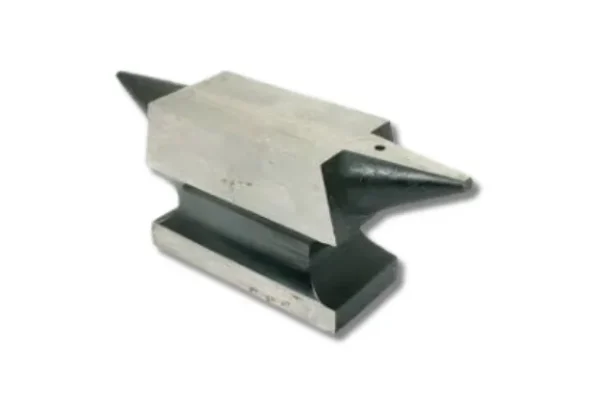
Double horn anvils feature two horns—a rounded horn for bending and a tapered one for creating different shapes and angles. With a large flat face for general hammering and holes for tool insertion, these anvils provide maximum versatility. They’re particularly suited for complex shaping tasks, blacksmithing, and decorative metalwork.
Key Features:
- Two horns for diverse shaping options.
- Large flat face for hammering.
- Hardie and pritchel holes for added functionality.
Uses: Suitable for intricate shaping, blacksmithing, and ornamental metalwork.
7. Colonial Anvils
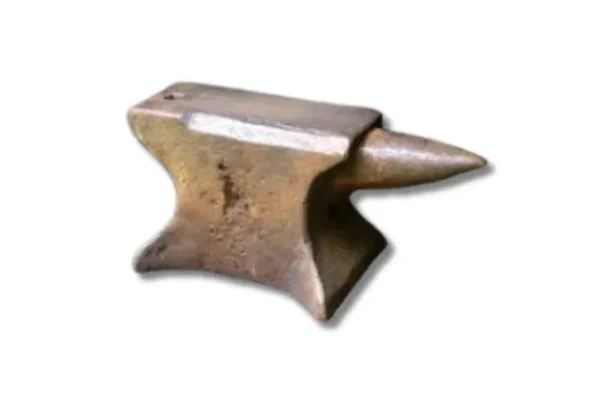
Colonial anvils are modeled after the historic anvils of past centuries. They are often used in restoration projects and traditional blacksmithing due to their historical design. With a large flat face and a single horn, colonial anvils offer functionality while maintaining a vintage aesthetic. They may include decorative elements that enhance their historic appeal.
Key Features:
- Traditional design with historic construction.
- Large flat face and a single horn.
- Decorative elements for authenticity.
Uses: Perfect for restoration projects, historical reenactments, and traditional blacksmithing.
Choosing the Right Anvil for Your Metalworking Needs
When selecting an anvil, consider the following factors to ensure it meets your specific needs:
- Weight: Heavier anvils provide stability but are less portable.
- Material: Steel anvils offer greater durability and wear resistance compared to cast iron.
- Design: Choose a design that aligns with the tasks you’ll be performing, whether it’s forging, shaping, or intricate work.
The Enduring Legacy of Anvils in Metalworking
Anvils remain essential tools in metalworking, serving as a stable surface for shaping and forming metal. With the right anvil, you can enhance your metalworking projects, ensuring precision and durability in your work. Anvils are not just tools—they’re a link to centuries of craftsmanship and tradition. Whether you’re a blacksmith, farrier, jeweler, or hobbyist, selecting the right anvil allows you to tap into this rich history and continue the legacy of metalworking excellence.
So next time you’re in your workshop, give a moment of appreciation to the anvil. It’s not only a tool but a testament to the power of craftsmanship that has shaped the art of metalworking throughout history.
